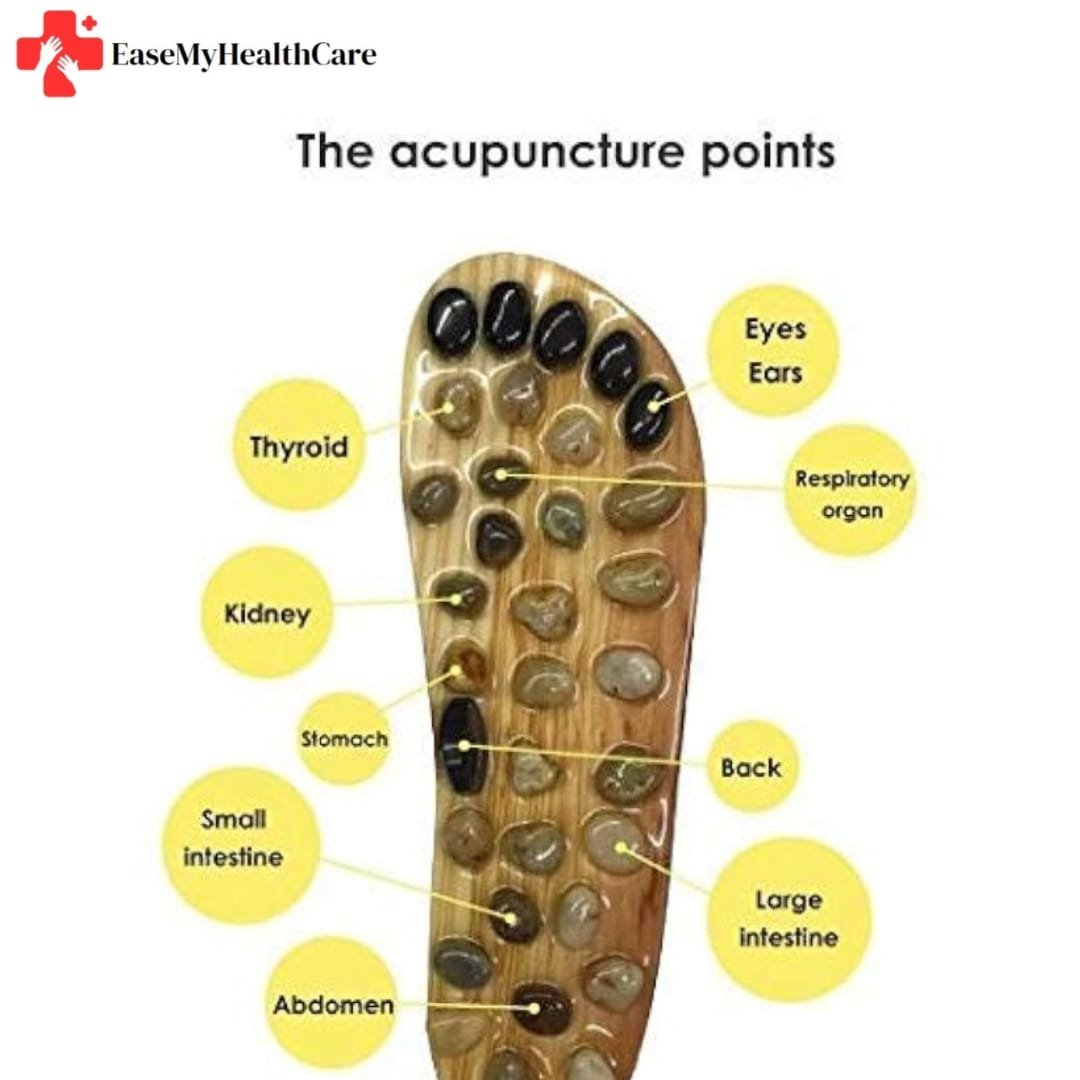Kidney stones are tiny, hard deposits that form in the kidneys, causing intense pain and discomfort when they travel through the urinary tract. While conventional treatments like medication and surgery are effective, natural therapies like acupressure can provide much-needed relief. In this blog, we explore the best acupressure points for managing kidney stone pain and how this ancient healing practice works.
Understanding Kidney Stones
Kidney stones are mineral and salt deposits that form in the kidneys. Factors like dehydration, diet, and genetic predisposition contribute to their formation. Symptoms of kidney stones include:
- Sharp pain in the lower back or abdomen
- Blood in urine
- Frequent and painful urination
- Nausea and vomiting
If left untreated, kidney stones can lead to complications such as urinary infections or kidney damage.
How Does Acupressure Help with Kidney Stones?
Acupressure is a non-invasive therapy that stimulates specific points on the body to relieve pain and promote healing. By targeting meridians linked to kidney and urinary health, acupressure can:
- Alleviate pain
- Improve urine flow
- Reduce inflammation
- Support kidney function
Top Acupressure Points for Kidney Stone Pain
Here are some effective acupressure points to ease kidney stone pain:
1. Kidney Point (KD 3)
- Location: Found in the depression between the ankle bone and Achilles tendon.
- How to Use: Apply firm pressure with your thumb for 2-3 minutes on each foot.
- Benefits: Supports kidney health, reduces lower back pain, and improves urinary function.
2. Bladder Point (BL 23)
- Location: On the lower back, 2 finger-widths away from the spine at waist level.
- How to Use: Massage gently in circular motions for 5 minutes.
- Benefits: Relieves lower back pain and strengthens kidney energy.
3. Spleen Point (SP 6)
- Location: Four finger-widths above the inner ankle bone, along the tibia.
- How to Use: Press and hold for 2 minutes on both legs.
- Benefits: Alleviates abdominal pain and improves digestion and kidney function.
4. Renal Point (CV 4)
- Location: Four finger-widths below the belly button.
- How to Use: Apply gentle pressure for 3-5 minutes.
- Benefits: Enhances kidney energy and boosts urinary health.
5. Stomach Point (ST 36)
- Location: Four finger-widths below the kneecap, one finger-width to the outer side of the shinbone.
- How to Use: Massage firmly for 2-3 minutes.
Benefits: Improves digestion and alleviates abdominal discomfort associated with kidney stones.
How to Practice Acupressure Safely
Acupressure is generally safe, but it’s essential to follow these guidelines:
- Consult a Professional: If you’re new to acupressure, consider consulting a certified practitioner.
- Use Gentle Pressure: Avoid excessive force, especially in sensitive areas.
- Stay Relaxed: Practice acupressure in a calm environment to enhance its effectiveness.
- Hydrate: Drink plenty of water to support kidney function and flush out toxins.
Other Natural Remedies for Kidney Stones
While acupressure provides relief, combining it with other natural remedies can enhance its effectiveness:
1. Stay Hydrated
Drinking 8-10 glasses of water daily helps dilute urine, preventing stone formation.
2. Lemon Water
Citrate in lemons can break down calcium deposits, reducing kidney stone formation. Learn more about the benefits of lemon water for kidney health here.
3. Dietary Changes
- Reduce salt and animal protein intake.
- Increase consumption of fruits and vegetables rich in water and potassium.
4. Herbal Remedies
- Chanca Piedra: Also known as the “stone breaker,” this herb helps dissolve kidney stones.
- Basil Tea: Reduces uric acid levels, preventing stone formation.
When to Seek Medical Attention
While acupressure and natural remedies can help manage symptoms, medical intervention may be necessary if you experience:
- Severe, unrelenting pain
- High fever and chills
- Difficulty urinating
Benefits of Combining Acupressure with Conventional Treatments
Combining acupressure with traditional treatments like medication or surgery can:
- Accelerate recovery
- Reduce reliance on painkillers
- Improve overall well-being
Explore More: Alternative Therapies for Pain Relief.
Conclusion
Acupressure offers a holistic approach to managing kidney stone pain, promoting natural healing and improving overall kidney health. By stimulating specific points on the body, you can alleviate pain, enhance urinary function, and support your recovery journey. Combine acupressure with hydration, dietary changes, and herbal remedies for the best results.
If you’re struggling with kidney stone pain, consult a healthcare professional to determine the best treatment plan for your needs. Or Contact Us with EaseMyHealthcare to Incorporate acupressure into your routine and take a step towards better health today.
Disclaimer: This blog is for informational purposes only and should not replace professional medical advice.




